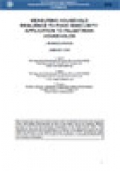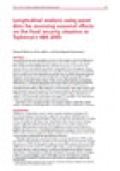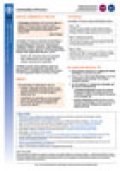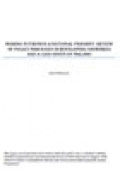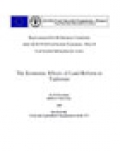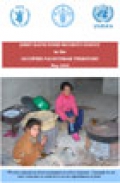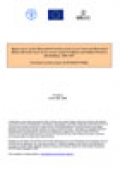Publications
Publication series
Latest publications
Country case study, 2009
The fisheries sector is a source of employment and income for more than 43 million fishers and fish farmers in the world, and the great majority of these live in developing countries, principally in Asia....
Available in:English
Country case study, 2009
Sixty years after the first affirmation of the right to food, much remains to be done to make this a reality. In 2006, FAO’s State of Food Insecurity in the World report estimated the number...
Available in:English
Country case study, 2009
The concept of resilience has recently been introduced into food security literature. It aims to measure households’ capability to absorb the negative effects of unpredictable shocks, as a legitimate component of vulnerability analysis. The definition...
Available in:English
Country case study, 2008
The Tajikistan Household Budget Survey (HBS) has the particular characteristic of collecting expenditure and income data from the same households over a long period. The longitudinal survey design accounts for all variations, including seasonal effects,...
Available in:English
Country case study, 2008
Communities of Practice (CoPs) have been defined as: “groups of people who share a concern, a set of problems, or a passion about a topic, and who deepen their knowledge and expertise by interacting on...
Available in:English
Country case study, 2008
This paper looks at why nutrition is integral to economic growth. It includes a short discussionof how malnutrition acts as a brake on economic development, and posits that any government pursuing an efficient development strategy...
Available in:English
Country case study, 2008
The purpose of this study is to analyze the economic effects of land reform policies in Tajikistan on the country’s agricultural sector and rural households. There is a conspicuous lack of evidence-based policy dialogue with...
Available in:English
Country case study, 2008
Within the framework of FAO-EC project “Designing an Integrated Strategy to Improve Armenia’s Food Security through Improved Management and Utilisation of Plant Genetic Resources”, a Study was conducted jointly by FAO, ICARDA and Ministry of...
Available in:English
Country case study, 2008
The main driver of Palestinian food insecurity is of a political nature, as key elements of vulnerability are rooted in the military and administrative measures imposed by the Israeli occupation closure regime, permits, destruction of...
Available in:English
Country case study, 2008
FAO leads a project in Central Mozambique, funded by the Belgian Survival Fund, to improve food security and nutrition in communities affected by HIV/AIDS (GCP/MOZ/079/BEL). A baseline survey of 4 districts was conducted in December...
Available in:English






